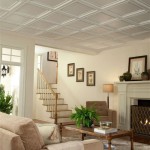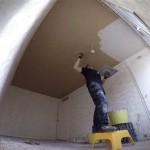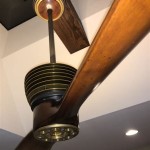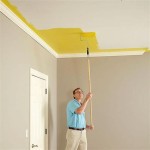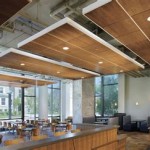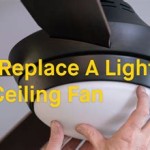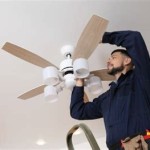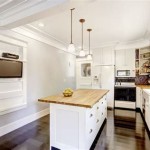False Ceiling Meaning In English
A false ceiling, also known as a drop ceiling or suspended ceiling, is a secondary ceiling constructed below the original ceiling of a building. It is a common architectural feature that serves both aesthetic and functional purposes. False ceilings are typically made of various materials, including gypsum boards, metal panels, and wood, and are suspended from the main ceiling structure using a grid system or other support mechanisms.
Aesthetic Considerations
False ceilings can significantly enhance the visual appeal of a room by providing a clean, smooth surface that conceals imperfections in the original ceiling. They can also be used to create decorative patterns, textures, and colors, adding a touch of elegance and sophistication to the space. The ability to incorporate lighting fixtures and other elements within the false ceiling structure further enhances its aesthetic appeal.
The choice of material for the false ceiling significantly impacts its appearance. Gypsum boards offer versatility for achieving different designs, while metal panels provide a modern and sleek look. Wood panels contribute warmth and a more traditional feel, while acoustic tiles can effectively absorb sound and improve the room's acoustics.
Functional Benefits
Beyond aesthetics, false ceilings offer several functional benefits. One crucial application is in concealing electrical wiring, plumbing pipes, and ventilation ducts, creating a more organized and visually appealing environment. This is particularly useful in areas where these elements need to be hidden but readily accessible for maintenance or repairs.
Furthermore, false ceilings can help with sound and thermal insulation. By creating an air gap between the original ceiling and the false ceiling, these structures can reduce noise transmission between floors, providing better soundproofing for spaces. They can also improve thermal insulation, making the room more comfortable and energy-efficient by minimizing heat loss during the winter and heat gain during the summer.
Another advantage of false ceilings is the ability to integrate lighting fixtures seamlessly. Recessed lighting can be incorporated into the ceiling structure, providing even illumination while minimizing visual clutter. This feature is often preferred in residential and commercial spaces for its aesthetic appeal and functional benefits.
Types of False Ceilings
There are various types of false ceilings, each with its own characteristics and applications. Some of the most common types include:
Gypsum Board Ceilings
These are the most common type of false ceiling, offering versatility in design, affordability, and ease of installation. Gypsum boards are readily available in various sizes and finishes, allowing for customized designs to suit specific needs. They are also fire-resistant and provide good sound insulation.
Metal Panel Ceilings
Metal panels are known for their durability, resistance to moisture, and clean, modern aesthetic. They are often used in commercial spaces, kitchens, and bathrooms, where durability and hygiene are essential. The panels come in various colors and finishes, allowing for customization to fit the space's overall design.
Wood Panel Ceilings
Wood panel ceilings add warmth, character, and a traditional feel to a space. They can be made from various woods, including oak, maple, and pine, and can be stained or painted to match the room's decor. Wood panel ceilings provide good sound insulation and can be customized to create unique patterns and designs.
Acoustic Tile Ceilings
Acoustic tiles are specifically designed to absorb sound, making them ideal for spaces where noise reduction is essential. They are often used in auditoriums, theaters, and conference rooms to improve sound quality and reduce reverberation. These tiles are available in various colors and patterns and can be easily installed.
T-Bar Ceilings
T-bar ceilings use a grid system of metal T-shaped bars to support the ceiling panels. This type of ceiling is frequently used in commercial spaces, allowing for easy access to the space above the ceiling for maintenance and repairs. T-bar ceilings are typically made of metal, providing durability and resistance to moisture.
The choice of false ceiling type depends on factors such as budget, aesthetic preferences, functionality, and the specific requirements of the space. Consulting with an architect or interior designer can help in selecting the most suitable option for a given project.
False ceilings have become an integral part of modern architecture, offering a combination of aesthetic appeal, functional benefits, and design flexibility. From enhancing the appearance of a room to creating a more comfortable and functional environment, false ceilings are a versatile and valuable architectural feature.

False Ceiling Definition Benefits And Various Types Happho

False Ceiling Definition Benefits And Various Types Happho
What Is False Ceiling Quora

Types Of False Ceilings And Its S The Constructor

Types Of False Ceilings And Its S The Constructor

Dropped Ceiling Wikipedia

False Ceiling Types Of Panels Or Tiles Commonly Used In And Their S The Economic Times

Modern False Ceiling Designs Decorating Ideas For Living Room

Pop Vs Gypsum Pvc Grid False Ceiling 5 Ultimate Comparision My Engineering Support

Pop Vs Gypsum Pvc Grid False Ceiling 5 Ultimate Comparision My Engineering Support
Related Posts

